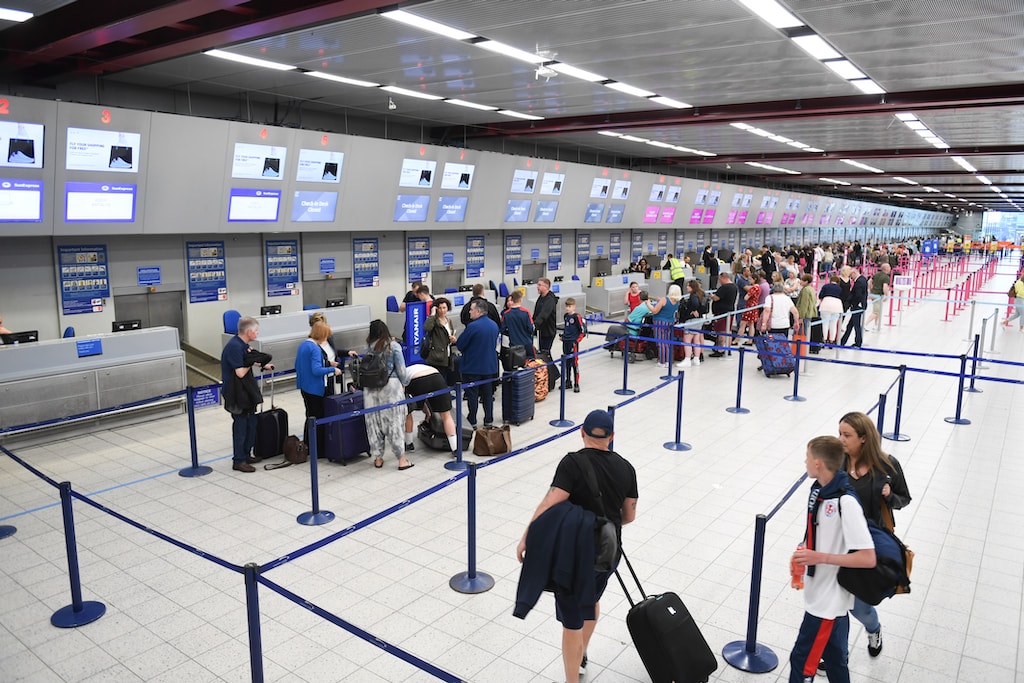
Digital transformation refers to an organization’s ongoing process or journey to shift from manual to digital processes.
Today, digital transformation is changing how major operations in the services, transport, industry, and business sector are undertaken. In the transport sector, airports are increasingly adopting digital transformations.
Digital transformations in airports are successfully addressing complex operational challenges. Airports are increasingly transforming internally, incorporating digital tools that enable new thinking and improving the satisfaction of customers, efficiency, and revenues.
Below, we discuss how airport digital transformation positively impacts passenger satisfaction, efficiency, and revenues.
1. Customer Satisfaction

Many great digital technology products adopted by airlines have tremendously improved customer satisfaction. They include; e-luggage tags, AI customer service, automatic cleaning robots, and microbial and ultraviolet light cabin cleaning.
Such technologies have drastically assisted in meeting the demands of customers, especially in the area of hygiene. Since COVID-19, there has been a great demand for higher hygiene levels. Airlines are also obliged to provide adequate preventive measures. With the aid of the technologies above, customers feel safer traveling.
Digital transformation in airports has also reduced the stress customers go through in airports. Due to delays and other stressful experiences, travelers normally have difficult times at airports.
Technology tools have answered customers’ essential questions and solved most of the stressful situations common in an airport. For instance, digitizing airport information is part of digital transformation solutions to boost customer satisfaction.
Without the digitization of airport information, the airport experience would be a nightmare for most customers. For instance, customers must go through different checkpoints on time to take advantage of every flight. That is with the assumption that they can handle miscellaneous and last-minute tasks like taking a bite or picking up last-minute holiday essentials.
The digitization of information has made that easy and smooth since they can access this digitized information in real-time.
2. Efficiency

It is estimated that the current air traffic volume will double by 2035. As the world becomes increasingly globalized, more people travel overseas. Therefore, air traffic is subsequently on the rise. Because of that, airports must seek new solutions to manage the growing traffic while delivering exceptional travel experiences and high-quality services.
Such solutions will come from incorporating digital tools in airport operations. These digital tools will enhance the efficiency of airport operations by proactively preparing travelers.
Providing detailed information on flight status, security, time to the gate, and current weather, makes airport operations more efficient. Some of the digital tools used in airports are discussed below.
Passenger Flow Management (PFM) is one of airport operations’ most notable digital transformation features. This feature improves the efficiency of passenger flow in the airport terminal.
With the integration of this feature into passenger flow control, airports, especially with capacity constraints, can automate their passenger flow operations. What is the main feature of Passenger Flow Management? The video analytic solutions enable the tracking of passengers.
The sensors that run on Wi-Fi and low-energy Bluetooth provide customers with information on the airport’s location-based services and queue wait times. It also provides quick navigation within the airport.
Passenger flow management also provides information about airport facilities, vehicle parking, and flight status. The feature enables operators to undertake forecast demand in peak operations. It also helps in the planning of different operations through simulation tools. With that, operators can locate and mitigate any bottlenecks in the flow of operations.
Digital transformation has proven to boost efficiency in Cincinnati airport, Northern Kentucky, USA. In 2016, the airport experienced footfalls totaling 6.7 million through its terminal. The traffic in the airport grew by 80 percent, and a solution had to be formulated quickly. Luckily, the video analytic solutions deployed helped to clear the traffic.
Another tool is Walkbase. This software tool analyzes data from a full network of connected devices and sensors securely and privately. Its central analytics platform simulates an accurate visualization of passenger flow and dwells via a given airport facility or terminal. The data generated boosts the understanding of airport operational improvements and passenger flow. It helps to anticipate, thus properly managing increased staffing at specific times of the day and in specific areas.
3. Improving Revenues

There is a strong correlation between customer waiting times and their shopping habits.
According to data from Carrasco International Airport, the non-aeronautical revenue collected strongly correlated with the waiting times at various airport hot spots. When customers have enough time, they are most likely to be in the spending mood. That leads to increased revenue for the airport.
In addition to increasing the non-aeronautical revenue, shorter waiting times also boosts the aeronautical revenue.
With satisfied customers, there is less likelihood that they will resort to other alternatives for transport. If the services of a specific airline are more desirable than others, more customers will want to travel with that particular airline.
Digital transformation in airports has greatly improved revenue for both the customers and the airlines. Faster travel times mean that customers’ time is well preserved. They can then travel more and handle their businesses better.
Additionally, the accumulated benefits of digital transformations in airports have largely led to increased revenues.
First, digitization has removed the barriers created by manual processes. These barriers include; the creation of silos and delays in accessing and distributing information. Digitization in an airport enables business integrations.
Data provided by airlines, airports, and tenants are integrated, thus increasing efficiency and effectiveness, responsiveness and agility, reduction of unanticipated negative events, real-time and predictive decision-making, and increased awareness of trends.
All these accumulate to boost the revenue of both the customers and the airline business.
Final Thought
With the growing demand for air transport, there is a huge need to optimize airport operations and processes to cater to the growing needs. Digital transformation has come in handy, changing customer experience in airports and increasing the efficiency of running airport operations.
More and more tools and innovations are increasingly coming up, making air transport safer and more convenient.